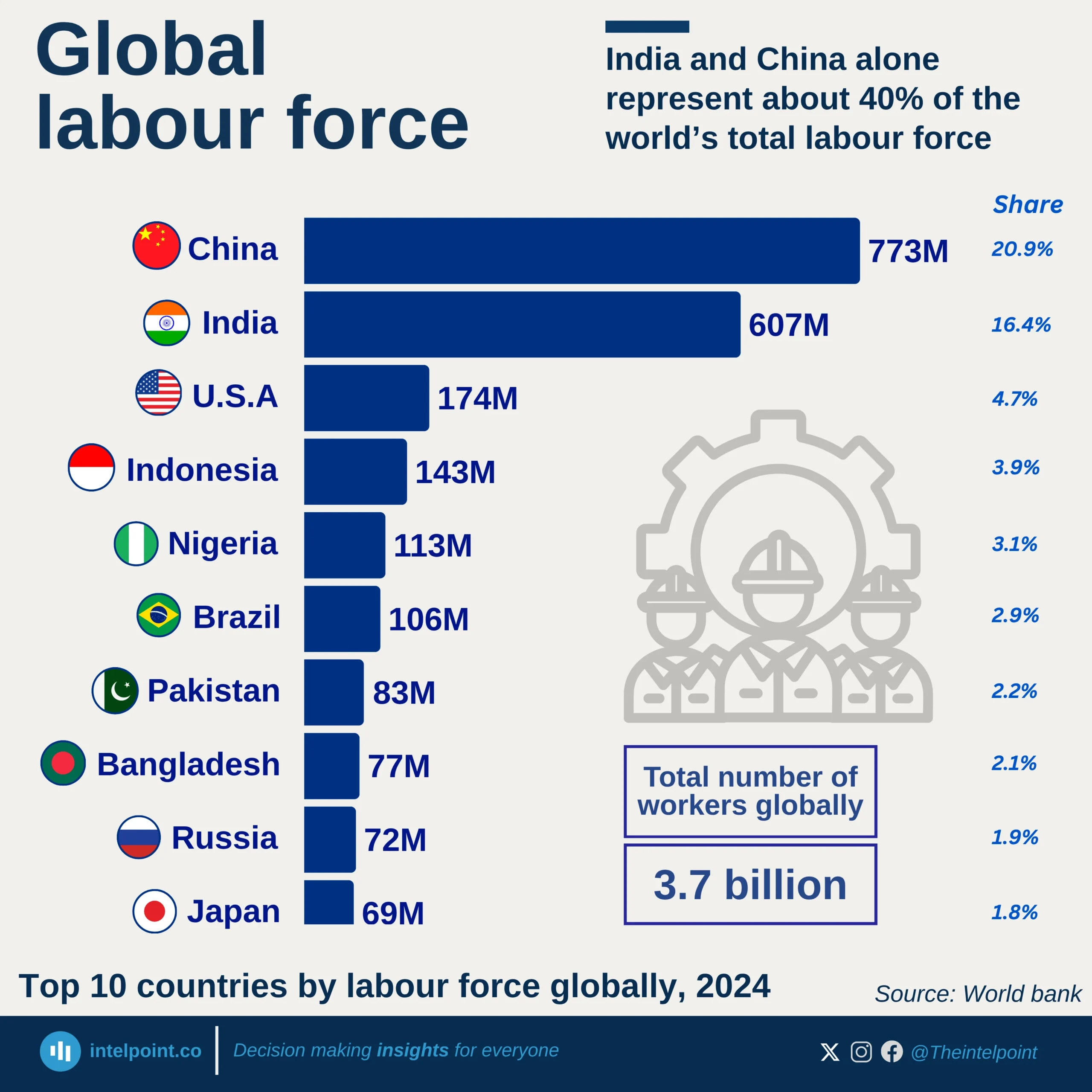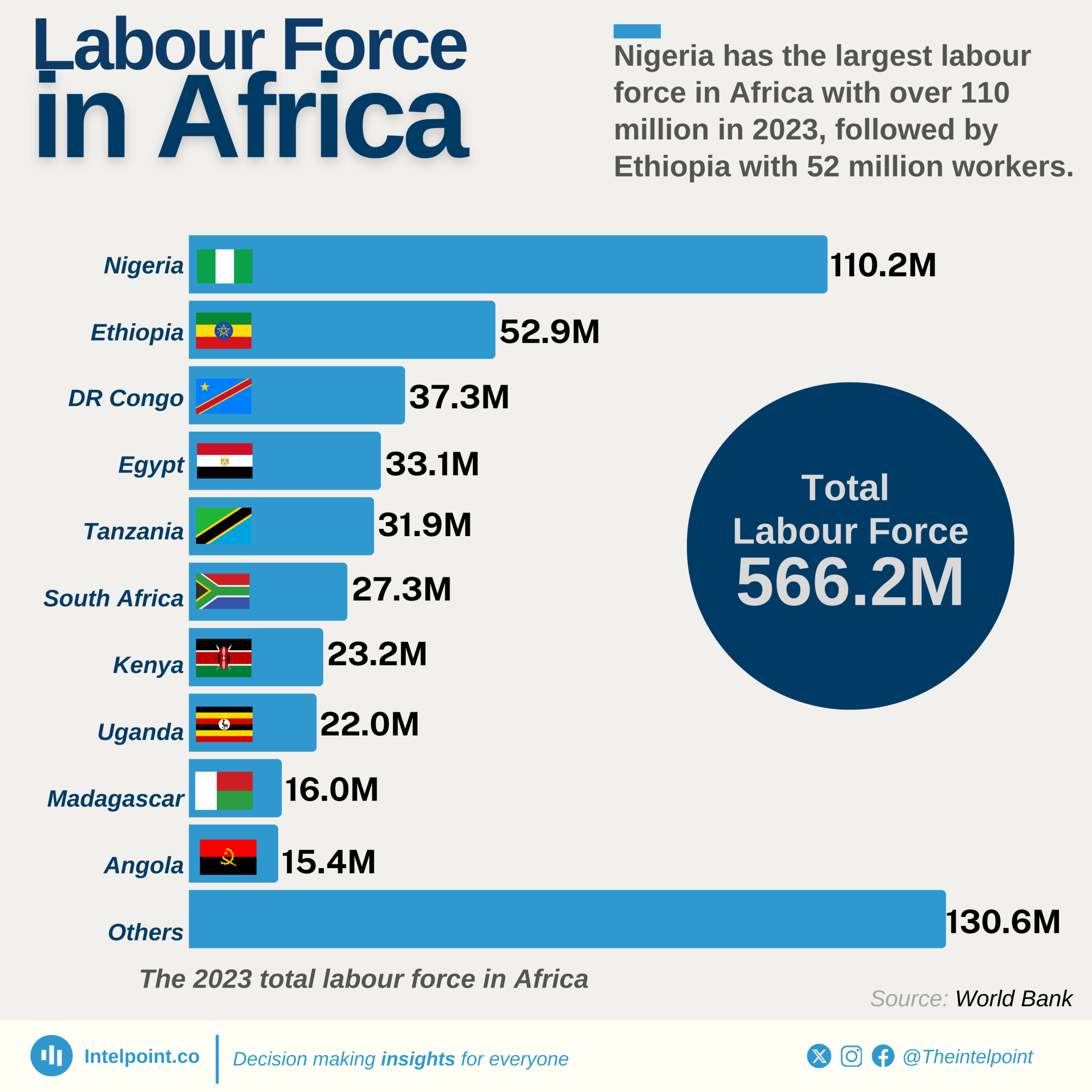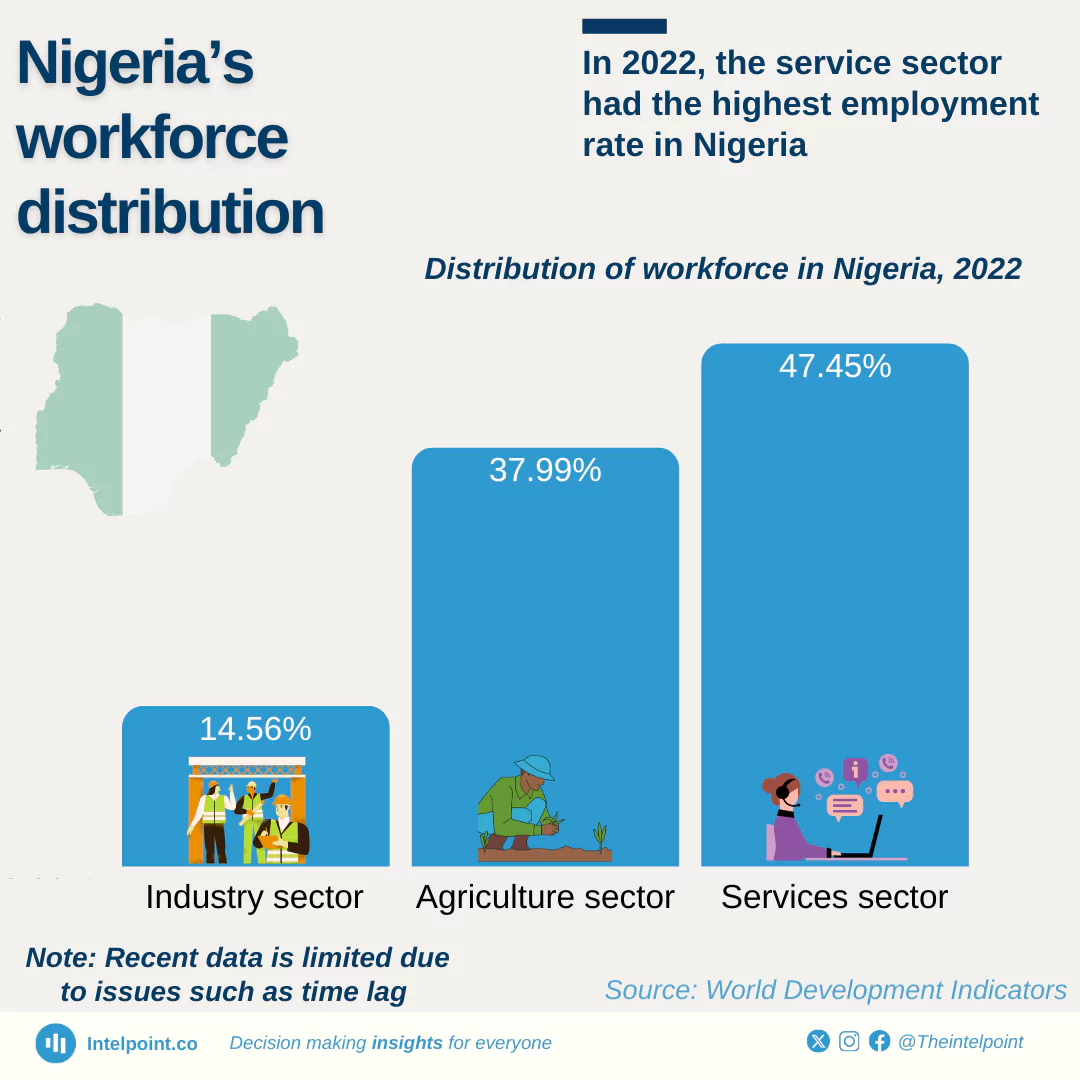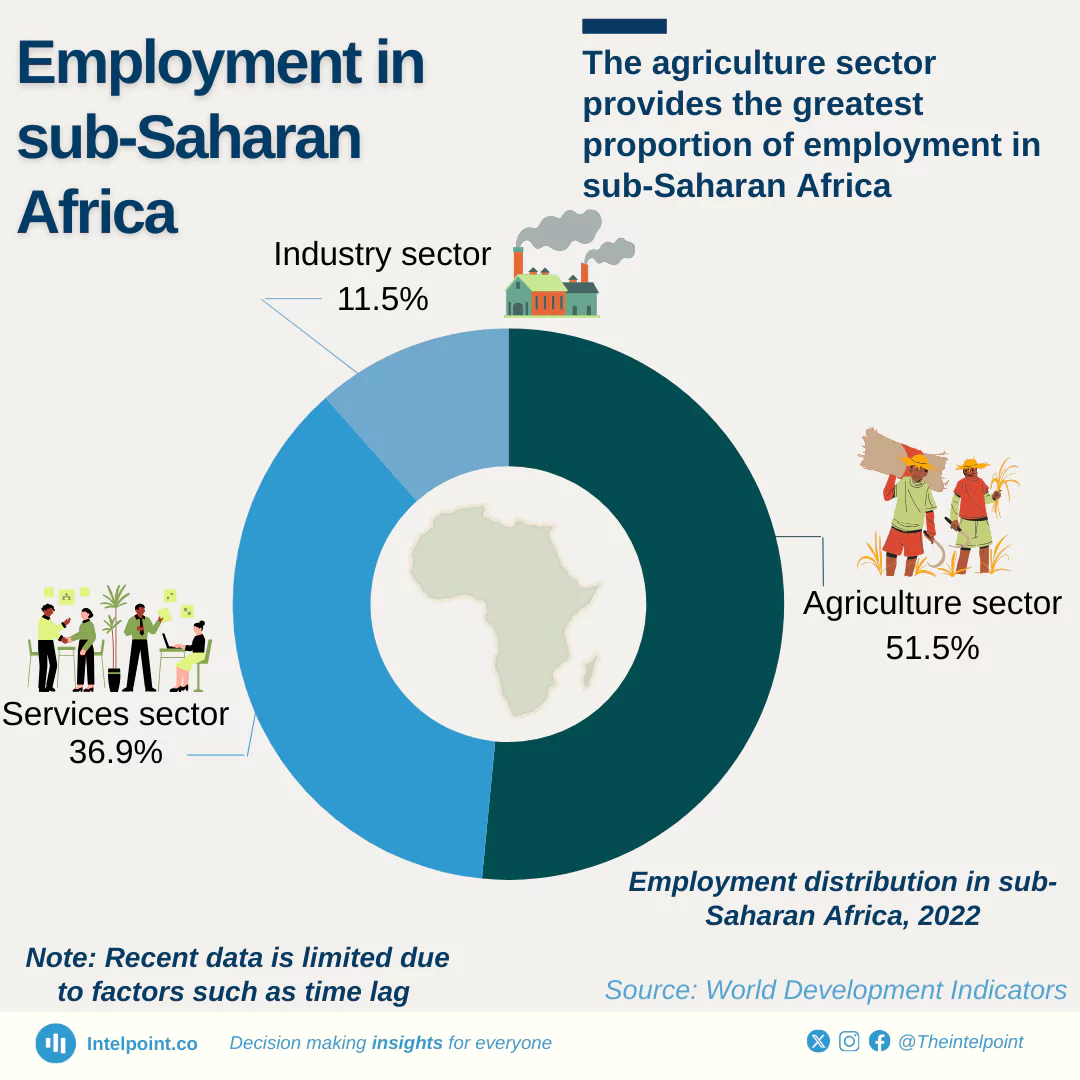Key takeaways:
As of 2022, the services sector accounted for the largest share of employment across economic activities, comprising approximately 50 percent of global jobs. The agriculture sector represented around 26 percent of total employment, while the industry sector comprised about 24 percent. The global breakdown of employment by sector indicated that the industrial sector accounts for the smallest share of global employment.





